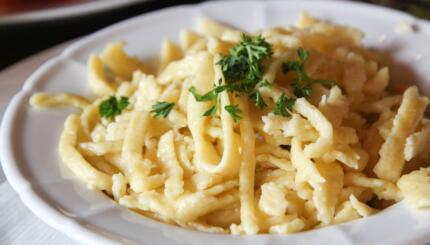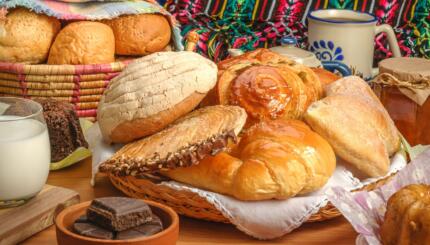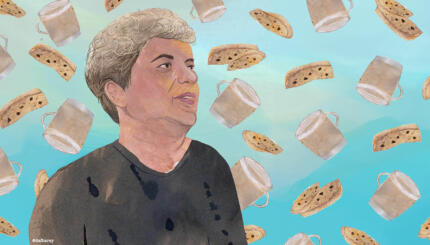My family are from a coastal suburb of Tripoli, where my grandparents married very young and had 16 children. When the majority of Jews fled Libya in the early 50s, some moved to Italy, which had close ties to Libya (many Libyan Jews spoke Italian in addition to Arabic), and others, including my family, emigrated to Israel.
While there are no Jews left in Libya, the community lives on through beautiful customs, songs and perhaps what we are most famous for: our cuisine. Libyan-Jewish cuisine has Arab, Italian and Mediterranean influence, and is known for rich flavors, slow-cooked stews over couscous, spices such as paprika, cumin, caraway, cinnamon and chilis — and lots of oil (it’s not truly authentic Libyan cuisine if you’re not heavy handed with the oil). Many of our dishes have become an integral part of Israeli cuisine.
I wanted to share these nine essential Libyan Jewish dishes to introduce you to our beautiful cuisine.
1. Hand-Rolled Couscous
We cannot start the conversation about Libyan Jewish food without mentioning couscous. It’s a staple in our diet and most meals revolve around it. You may have tried instant couscous from the grocery store or even at a restaurant, but this does not compare to the light and delicate texture of hand-rolled couscous made from scratch. This type of couscous is known to be only made by grandmothers due to its “old-school” and time-consuming nature. Trust me, it’s worth the effort, and once you try it you will never go back to instant.
2. Mafrum
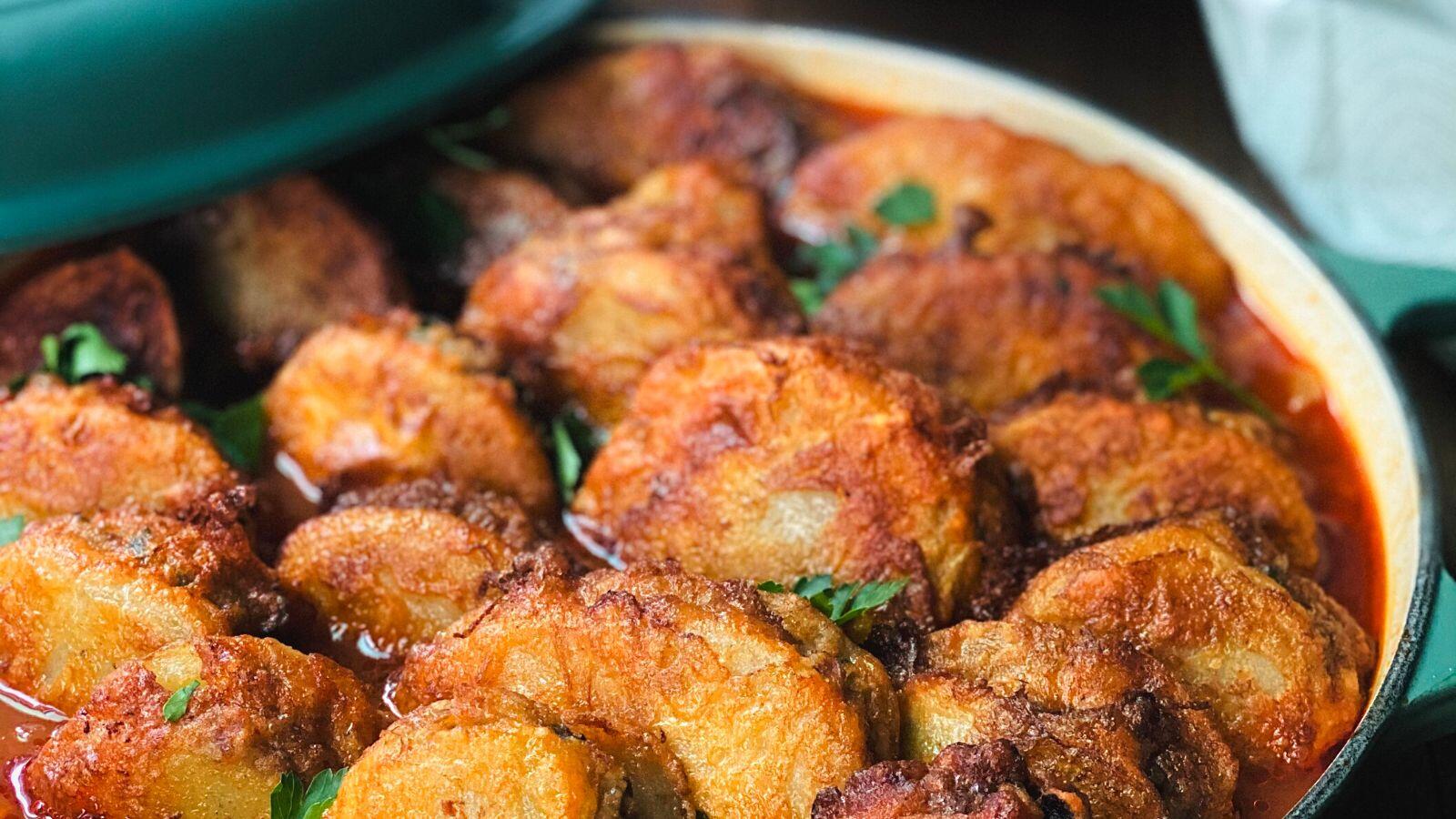
The crown jewel of Libyan Jewish cuisine, mafrum is a packed pan of meat-stuffed vegetables that are fried and then braised for several hours. The most traditional mafrum is potato, but my favorite is eggplant. On special occasions we stuff other vegetables, including delicate cauliflower.
Before adding the fried, stuffed vegetables to the pan, the bottom of the pot is layered with chopped veggies and herbs, which get beautifully charred and are fondly referred to by my dad as “kaar,” an Arabic term for the end or bottom of something — and is often the best part. Mafrum is a labor of love and a guaranteed mess in the kitchen, but it’s so worth it. There are many mafrum recipes circulating the internet, but secure yourself an invitation to a Libyan Jewish family’s home to try out an authentic version.
3. Tbecha
Tbecha is a general term to refer to a stew and literally means “cooked” in Arabic. There are many variations of tbecha including b’salk (beetroot) or b’tamatem (in tomatoes), and you often see tbechot include meat, potatoes and legumes. These stews are savory, spicy and packed with flavor.
Every Shabbat, my family eats a short-rib tbecha in tomato sauce with peas, string beans and potatoes;it’s the dish that tastes and smells most like home. Make sure to enjoy with couscous!
4. Tershi (aka Chershi)
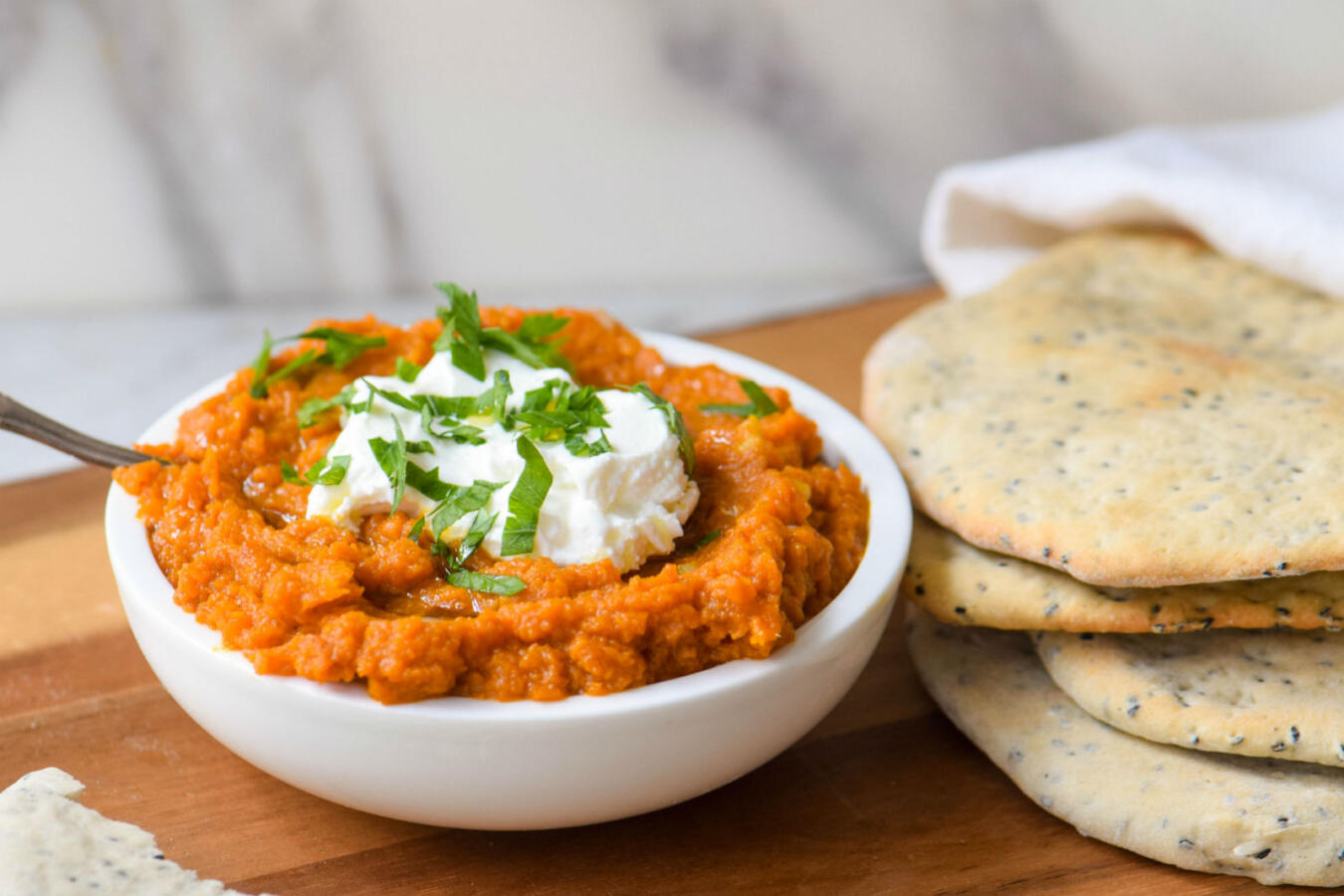
Tershi is a spicy, garlicky and tangy pumpkin dip that is a staple on all Libyan Jewish tables. A traditional meal revolves around couscous, an accompanying stew, and many dips and salads. In Israel, this collection of mezze-like dips and salads is called “salatim,” and tershi is a common addition.
5. Kukla
Kukla are lamb fat and semolina balls seasoned with garlic, paprika and assorted herbs. Kukla is distinctively Libyan and, while quite unhealthy, it’s worth every artery-clogging bite. You most often see kukla added to stews that are cooked overnight (such as hamim, Sephardi cholent) since these dumplings taste better the longer they cook. They’re an inexpensive and delicious way to feed many mouths and ensure no part of the lamb goes to waste.
6. Chraime

This stewed fish in spicy, tangy and garlicky red sauce is a staple of Libyan Jewish cuisine, and has become popular throughout Israel. My family usually serves this fish as an appetizer for Shabbat dinner, though it can — and should — be served as a main course, it deserves all the limelight! It’s best served with couscous, rice, challah or even matzah on Passover. Really any vessel that allows you to enjoy every last lick of delicious red sauce. I enjoy using salmon but hearty white fish like halibut or sea bass is more traditional.
7. Sharba
Sharba is essentially a thick tomato-based noodle soup that can be made vegetarian or with chicken or meat. Given Libya’s close historic ties with Italy, it’s no surprise that many Libyan dishes include varieties of noodles. Sharba, while seemingly simple, is packed with heat and deep flavors, perfect for when you’re feeling under the weather. Sharba can be whipped up in under 30 minutes, making it a perfect winter weeknight meal.
8. Boulou

Boulou is a bread traditionally eaten during the Yom Kippur break-fast meal. Boulou is mildly sweet and includes honey, dried fruits, nuts, caraway, fennel, sesame and nigella seeds. It’s traditionally made into an oval shape, then sliced before serving and often drizzled with honey. While other countries have their own versions, Libyan boulou includes yeast, which makes it more bread-like (versus closer to a cookie).
9. Saefra
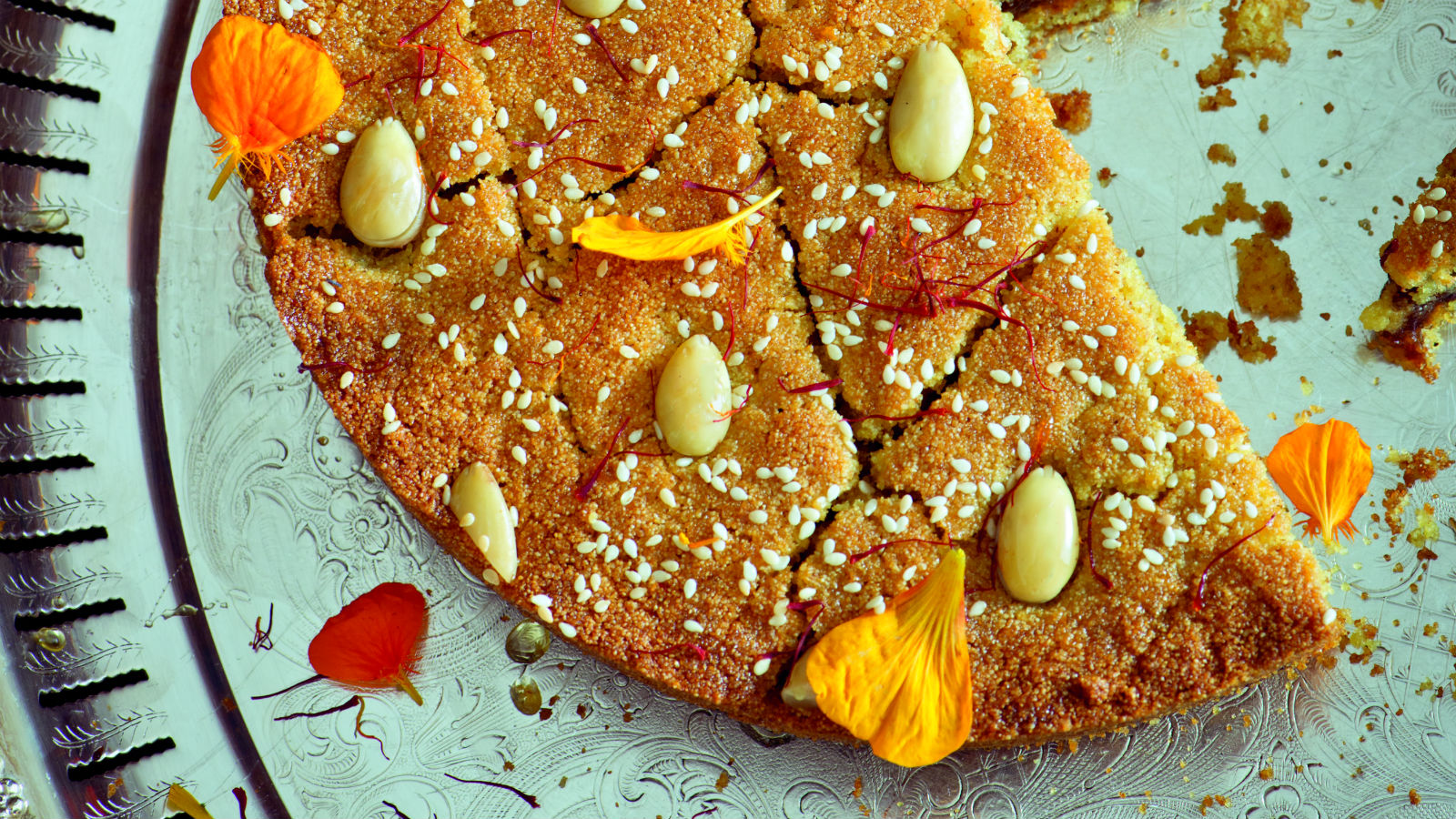
Saefra is a sweet semolina cake that is similar to basbousa (though a bit thinner and crispier). Semolina is a pantry staple in every Libyan home (as it’s the primary ingredient in couscous), so it’s easy to whip up at a moment’s notice. Once the cake is cooked it is soaked in a fragrant rose water (or orange blossom) syrup. Often, saefra includes a date filling and is decorated on top with almonds and sesame seeds.
This article was produced as part of The Nosher’s Jewish Food Fellows Program, which aims to diversify the voices telling Jewish food stories in media spaces.



